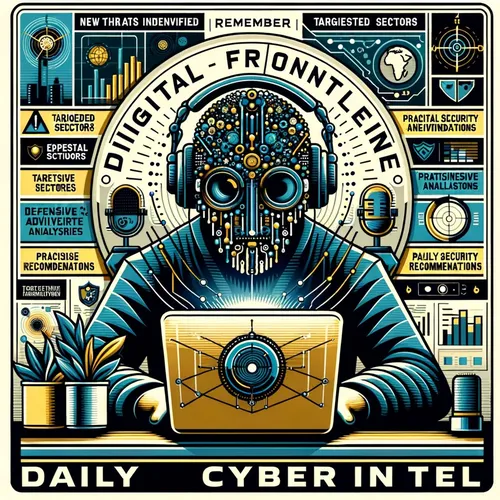Cyber Fireworks: China's Web Host Hacks, GodRAT's Stealth Moves, and Zero-Day Jitters
- Author
- Quiet. Please
- Published
- Tue 19 Aug 2025
- Episode Link
- https://www.spreaker.com/episode/cyber-fireworks-china-s-web-host-hacks-godrat-s-stealth-moves-and-zero-day-jitters--67443443
This is your Digital Frontline: Daily China Cyber Intel podcast.
Fresh from the digital trenches, it’s Ting here—and let’s just say, the past 24 hours on the China-US cyberfront have been far from boring. If you thought last week’s breaches were spicy, grab your firewalls, because it’s getting even hotter.
Right out of the gate, Anne Neuberger at the Hoover Institution has been sounding the klaxon, warning the US is lagging behind China in both cyber defense and offense. She’s practically begging American agencies to shore up defenses on everything from power grids and water plants to hospitals. Anne paints a vivid picture: every bit of digital infrastructure, folks, is now a frontline—you might want to rethink your definition of “essential services.” Her view: if the US can’t build real, retaliatory cyber muscle, a Taiwan flashpoint might see critical infrastructure devastated before the troops have their boots on[Hoover Institution].
Now, focusing on the past day, Chinese-linked APT crews have been aggressively targeting web hosting firms—not just in Taiwan, the usual focal point, but clearly this is a tactic that could swing stateside. According to Cisco Talos and a flurry of analyst chatter, a group known as UAT-7237 is exploiting poorly-patched web hosts to steal credentials and move laterally across entire networks. TechRadar and Infosecurity warn this method isn’t a one-off—the Chinese strategy uses web hosts as cyber airdromes, launching espionage sorties deep into cloud infrastructure. And if you’re thinking, “That sounds like a big deal,” you’re right; these hosts underpin much of our digital world.
But wait: fresh exploits are also in the mix. A new remote access trojan dubbed GodRAT, an evolution of Gh0st RAT, has been discovered by Kaspersky, hitting financial trading firms hard. Its trick? Hiding shellcode in image files—think malware wrapped like a digital fortune cookie, delivered by Skype, with attackers nabbing browser credentials and even pushing secondary payloads like AsyncRAT. Attribution points to groups with China-based ties, most likely Winnti (APT41), who love this modular attack style. If your trading desk is living on Skype or Telegram, check your .SCR files. Your antivirus might be napping through this one[The Hacker News].
The plot thickens with the exploitation of fresh software flaws. The new zero-day, CVE-2025-53770, hit Canada’s parliament last week and evidence suggests the same kind of vulnerabilities are being probed in US networks, especially where SharePoint and cloud platforms are in play. FireCompass analysts point to a critical tactic: the use of AI-flavored vishing, fooling staff into coughing up credentials, which is proving terrifyingly effective for bypassing multi-factor authentication.
So what do you do now, besides sweat? Here’s your action plan: Patch aggressively, especially web services and anything cloud-exposed. Scrutinize email attachments and links—even if they look like dad’s vacation photos. Jump on advanced EDR solutions with behavioral analytics, because signature-based antivirus alone just isn’t cutting it against stealthy RATs like GodRAT. And, maybe most importantly, invest in staff security training focused on AI-powered social engineering. Run those tabletop exercises—no one ever regrets practicing for the worst.
Thanks for tuning in to Digital Frontline: Daily China Cyber Intel. Don’t forget to subscribe, because with threats moving at the speed of light, you can’t afford to miss a single byte.
This has been a quiet please production, for more check out quiet please dot ai.
For more http://www.quietplease.ai
Get the best deals https://amzn.to/3ODvOta
